In this post in the worldbuilding series I’ll be considering currency. Every society needs some kind of money, trade or barter system in order to function. My current work-in-progress doesn’t feature money as a high priority item for my main characters, but, from time to time, I need to refer to some form of payment. For now, I’ve used generic coinage—copper pieces, gold coins, and so forth—but this misses an opportunity to add unique detail to the world.
This post is an exploration of the issues to consider when inventing your fantasy currency, through a brief look at the history of money, its physical features, and names.
The Development of Currency
Bartering
Before currency, bartering and trade were the main ways of acquiring goods and services. If you are writing a fantasy novel set in an early or medieval period, you may only need items of value to trade with.
One person would trade his goods for another person’s goods, for example, wool for food. In this way, everyone acquired the supplies they needed.
Often, easily measurable items were used to barter with, as people saw the need to exchange goods of equal value. Such commodities as salt, fur pelts, and wheat were commonly used. These items could be assessed for purity, quantity and quality. Roman soldiers sometimes received salt as a salary because of its inherent value.
Coinage
Metal has intrinsic value and would have been an obvious choice for bartering. In early societies, lumps or bars of gold may have been traded by the rich, and small copper pieces by the poor.
Technology continued to develop and subsistence farming decreased, leading to a need for more sophisticated financial systems. People living in cities would no longer have the same goods to trade, although they still had a need for obtaining them.
This lead to the development of coins: copper, silver, gold, and bronze being typical examples. Originally, the worth of a coin was the value of the physical piece of metal itself. As time progressed, this became impractical due to the quantities and weight of metal that one would need to carry around and measure on scales.
Denominations
Eventually, the material of the money became less important than what the money represented, so common metal coins would be inscribed with denominations. It would be agreed that a coin with “five” on was worth five times as much as a coin with “one” on it.
Each society would have a name for their particular currency and the different denominations of the coins. Some of these denominations would also have nicknames, many of which survived for hundreds of years.
Examples:
Canada:
The nickname of the one dollar coin, Loonie, is a reference to the bird on the coin, a loon. The smaller denominations are referred to as the quarter (25 cents), dime (10 cents) and nickel (5 cents). The Canadian one cent coin has been phased out.
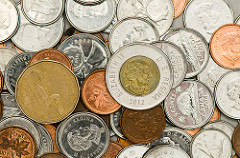 “Canadian Coins” by KMR Photography is licensed under CC BY 2.0
“Canadian Coins” by KMR Photography is licensed under CC BY 2.0
United Kingdom:
British coins from pre-decimalisation were complicated. The main unit of currency is the pound sterling. There were twelve pennies in one shilling, and twenty shillings in one pound. They are denoted by the letters, l, s, and d (which come from the Latin words libra, solidus and denarius – Roman weights and coins)
The notes were one pound and ten shillings (half a pound). Apparently it was rare to see any greater denomination than a five pound note prior to the 1960s, compared to today’s UK coinage where a fifty pound note is not uncommon. The five shilling coin, a crown, was mainly issued to mark special occasions, however the half crown coin (2s 6d) was in general circulation. The two shilling coin was called a florin, and the threepenny and halfpenny coins were often referred to as thrupenny bit and ha’penny. I’m thankful I was born after decimalisation as the maths was awkward!
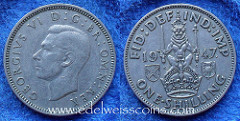
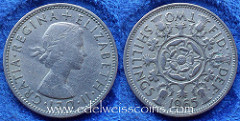
“UK shilling 1947 George VI” and “UK florin 1965 Elizabeth II 2” by Numismatic Coins and History is licensed under CC BY 2.0
Paper currency and beyond
As society became more advanced, paper currencies were developed. Paper currency is easy to carry around, easy to store, and easy to count. Most societies tend to run a dual metal and paper currency, where the coins represent smaller amounts and the paper represents larger amounts. For example, here in the UK, the largest value of coin is worth £2 and the next highest value of currency is the £5 note.
For high technology societies, plastic money and virtual money is an option. Several countries today have plastic bank notes, and many of us access our money using plastic cards and the internet—never actually seeing the physical money we own. Digital currency, such as Bitcoin, now exists. If you are considering writing sci-fi or cyberpunk, high-tech currency like this may be something to consider.
What Currency Suits Your Fantasy World?
Materials
Currency needs to be made from a common material in your fantasy world. Metal may not be the most practical substance to use. You should consider what substances your country is dependent on. Examples are wood, stone, beads, or shells.
However, you must consider the need for processing the materials to make coinage in such a way that counterfeiting is extremely difficult. Shells used as coins would be far easier to duplicate than metal coins with specific features.
A mint is an industrial facility that manufactures coins. Your country will need the ability to take the raw material and process it in some way to produce a recognisable, universal currency.
Shape and Design
Circular-shaped currency is the most common, but doesn’t have to be the norm. World currency has been produced in many different shapes. Some metal coins have milled edges to make fraud easier to detect. Most coins have pictures on them—sometimes the ruler of the country, or other images that reflect the country’s history or geography.
Have a look at these interesting examples:
Malta:
I had one of the scalloped Maltese coins as a child, from a relative who went there on holiday.
“Malta 2 mils 1972 2” by Numismatic Coins and History is licensed under CC BY 2.0
Japan:
These Japanese coins have holes in the middle:
“Japanese Coins” by Pere Ubu is licensed under CC BY 2.0
Cretan:
I love this ancient coin with a labyrinth on it:
“Knossos (Labyrinth)” by Tilemahis Efthimiadis is licensed under CC BY 2.0
Swiss:
And these brightly coloured Swiss notes are very distinctive.
“Swiss Bills” by cav is licensed under CC BY 2.0
UK:
The current UK 20p and 50p pieces are actually heptagonal. The collections of coins together has an interesting feature I wasn’t aware of myself until now – if you place the smaller coins in the correct formation, they create the picture of the shield on the back of the pound coin.
 “Coins” by Ian Dick is licensed under CC BY 2.0
“Coins” by Ian Dick is licensed under CC BY 2.0
My Choice
My novel includes two main countries, one of which is more dependent on magic and the other on machines.
It would make sense for the machine-based country to have metal coins, as it’s a common material, and they have an industrial society.
The magic-based country doesn’t make much use of metal, nor are there many forests, so wood is not a good choice, either. I’m thinking that something like hardened clay pieces or ceramics would work the best for my magical country, but I will have to consider the counterfeiting opportunities this would present and how they can be mitigated.
Naming Your Currency
Many fantasy countries are inspired by real life regions in terms of geographical features and climate. If you want to name your currency, researching coins in the equivalent real life country may give you ideas for your fantasy country.
My two fantasy countries are based, to some degree, on real-life regions. The first is a Middle-Eastern/Mediterranean style setting, and the second is closer to that of England back in the days of the industrial revolution.
So for my research, I made notes on the currencies, both current and historic, of England, Ireland and Germany for my machine-based country, and then of Israel, Greece and (Saudi) Arabia which all have similarities to my Middle-Eastern style magical country.
ENGLAND
Historic
In Anglo-Saxon England, the pound was a unit equivalent to one pound weight of silver, equal to 240 silver pennies.
The pound evolved into the modern pound sterling. Sterling silver is silver of 92.5% purity. Shillings and pence, the divisions of the pound, were influenced by Roman coins.
Current
Modern currency was established in 1694, when the Bank of England was founded. Decimalisation in the 1970s saw the currency drop shillings, and become merely pounds sterling and pence, with 100 pence to the pound.
IRELAND
Historic
The Irish pound was mainly equivalent to pounds sterling
Current
Southern Ireland now use the Euro. Northern Ireland uses pounds sterling, although specific Irish banknotes are issued. Technically, they can only be used in Northern Ireland, but they are widely accepted throughout the UK.
GERMANY
Historic
The mark has been the German currency since the unification in 1871. Prior to that, the different German states issued their own currency, although most were based on the Vereinsthaler, a silver coin.
The first mark was known as the Goldmark. Due to hyperinflation during the war, the currency became exclusively paper money and was known as the Papiermark. Later it was replaced by the Rentenmark and then the Reichsmark.
In June 1948, the Deutsche Mark was officially introduced. The division of the Deutsche Mark is the Pfennig and eventually become the currency of the united East and West Germany in the 1990s.
Current
Germany now uses the Euro.
ISRAEL
Historic
The historic country of Israel, which dates back to Bible times and was conquered by the Roman Empire following the Siege of Jerusalem in AD 70, used the shekel.
The state of Israel was reformed in 1948 and first used the Israel lira or pound. The Old Shekel was used from 1980-1985.
Current
The New Shekel has been used since 1985.
GREECE
Historic
Ancient Greece had many different coins, and refers to an empire, rather than the European country we know today. Coinage was introduced to the Greek world during the 7th century BC.
Space prevents me from going into too much detail, but the main standard of the Ancient Greek system was the drachma, weighing of 4.3 grams of silver. Drachmae were dividend into six obols, and each obol consisted of four tetartemorioi. Many coins were issued in varying denominations.
Other standards were used, namely the Corinthian stater, and the Aeginetan didrachm.
Modern Greek currencies, also called the drachma, were introduced from 1832.
Current
Greece now uses the Euro.
SAUDI ARABIA
Historic
A distinct political entity did not exist in this area originally, merely small independent regions.
The Ottoman Empire, which controlled part of the area, had a currency called the para, from the Persian word for “piece”.
Current
Currently Saudi Arabia uses the Saudi Riyal, introduced when the country was established in 1932.
Many European countries use the Euro following the introduction of the single currency in the late 1990s. Personally, I think I could have come up with something better than “Euro” for the currency of the EU. It’s a terribly unimaginative name!
Fantasy currencies
Fantasy currencies often seem to be boring—copper pieces and so on. It’s not an aspect of worldbuilding that is widely considered.
Here is a brief summary of a few more well-thought out currency systems:
Narnia
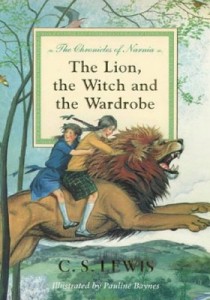 Narnian Lions are subdivided into Trees
Narnian Lions are subdivided into Trees
Calormene Crescents are subdivided into 40 Minims
These names are clear references to images that suit the countries in question. Narnia is famous for Aslan the Lion, and talking trees. Calormen uses a crescent-shaped emblem and curved swords.
Harry Potter
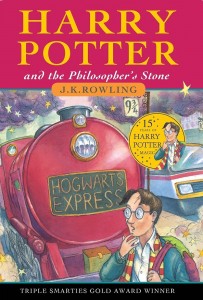 The Galleon, Sickle and Knut. They are gold, silver, and bronze, respectively. There are 17 Sickles in a Galleon, and 29 Knuts in a Sickle, meaning there are 493 Knuts to a Galleon.
The Galleon, Sickle and Knut. They are gold, silver, and bronze, respectively. There are 17 Sickles in a Galleon, and 29 Knuts in a Sickle, meaning there are 493 Knuts to a Galleon.
In my humble opinion it’s kind of silly having such odd numbers making up each coin. Can you imagine what Maths lessons would be like? I expect they all knew their 17 times table extremely well.
The majority of world currencies are either decimal, or comprise numbers with a high factorisation – 12, 24, 40 etc.
Discworld
The Ankh-Morpork dollar
The Lancre shilling
The Omnian obol
The Agatean rhinu
The Ephebean talent
Most of these names are based on world currencies.
Summary
There’s a lot to consider when it comes to currency, but it’s clear that a thoughtful approach will add depth to your worldbuilding. We’ve considered the development of currencies, the physical attributes, and the names, and all these aspects come together to give a realistic sounding monetary system.
If you’ve come up with a currency for your world, let me know about how you developed it in the comments.

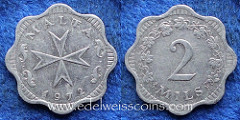
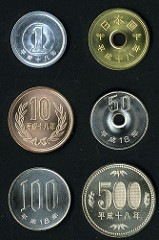
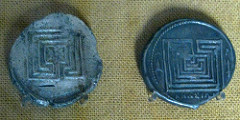
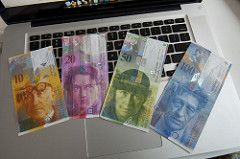
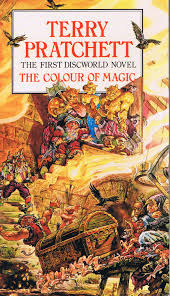
Awesome thoughts! This turned out amazing! 🙂
Thanks, I’m pleased with it!
Wow, you put a lot of work into this. It’s very impressive. 🙂 I haven’t needed a currency yet. I have wondered if I’d need one at some point and how to go about coming up with a system.
Thanks! I got some useful ideas for fleshing it out on Scrib.
This is a great compilation about currency! I usually avoid discussing it in my books beyond the occasional need to purchase, and they’re often the stereotypical gold/silver/copper, but I was thinking of changing that up when I edit my fantasy trilogy later this year; you’ve given me a lot to think about!
I’m glad you found it helpful 🙂
Amazing! I have this fantasy novel that I’m outlining in my mind for now.
And I also need currency. Wow, there’s so much work for me.
Great post!
I think I’ll be referring in your blog so much once I start writing that fantasy novel.
I’m glad it’s helpful! Yes, there are so many little details you can add to a fantasy world to make it come alive.
This is a great post.
Something I’m struggling with, is a reason for my currency.
I’m writing an Urban Fantasy, with some wainscot society stuff, but I can’t think of a reason for my hidden characters to actually use a unique currency instead of the standard currency where they live.
Thanks for stopping by! Glad you are enjoying the worldbuilding posts.
Thanks to this post I figured out what my currency is for my novel; the smallest denomination is the Vatu (Va-two) which is shaped like a octagon. The middle denomination is the Rota (Row-tah) and the highest denomination is Tarvo (Tear-voh) also the tear is like a tear in a piece of paper. 10 Vatu is one Rota. 10 Rota is one Tarvo.
Just realized this post is 10 years old nevermind
I’m still here, even though it’s an old post! All the best for your novel.